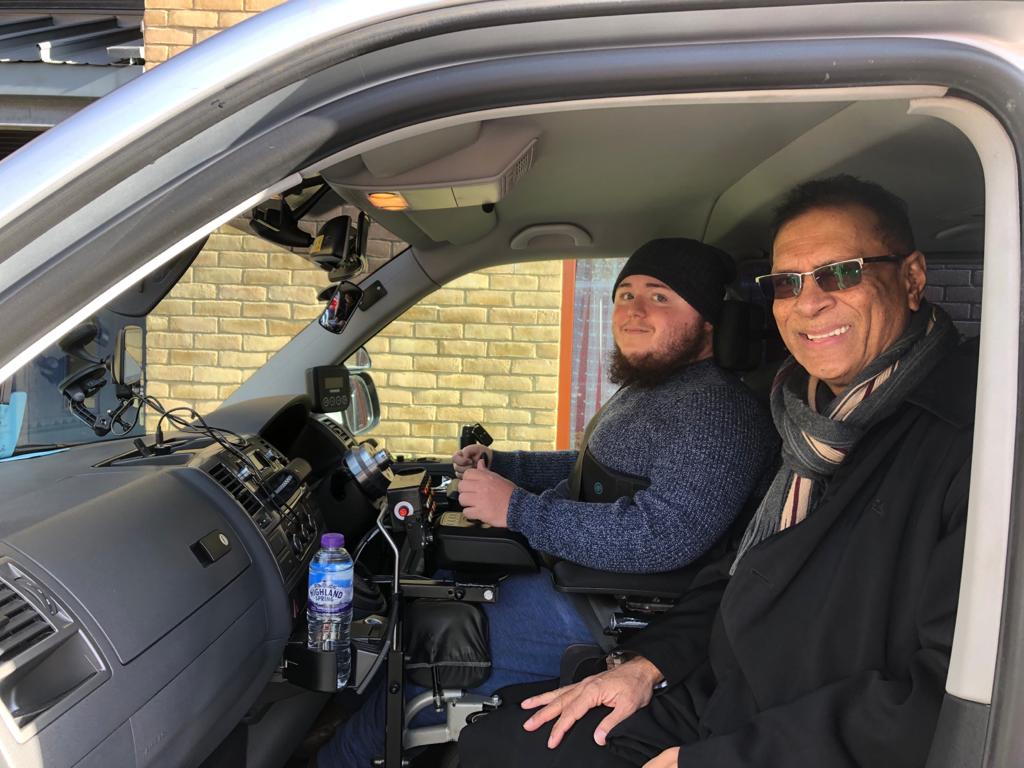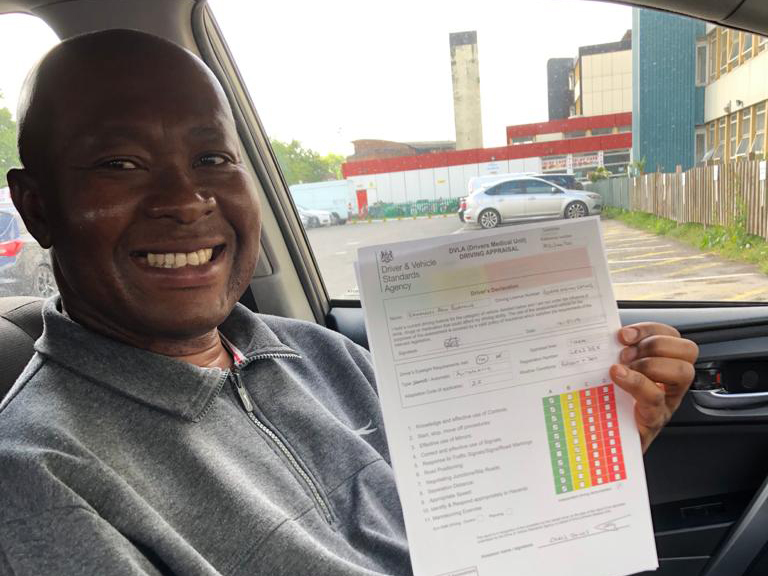Every year approximately 1.5 million young people take their driving test. 50,000 of these learner drivers will have a disability and 4 in 5 of those disabilities will be hidden.
We can all appreciate that having a driving licence is almost a rite of passage for every 17 year old. Being able to drive sets you on the path to independence and provides a real sense of freedom and autonomy. Getting behind the wheel of your own car certainly beats making your journey via public transport or relying on other people for lifts! This is especially true for people living with a disability. Being able to drive opens up a range of opportunities and means travelling from A to B becomes much easier as public transport is not always accessible. Certain disabilities (be they visible or invisible) can affect not only how a person is able to operate a vehicle but also the way that they learn, interpret the world around them and affects how they communicate with both instructors and examiners.
If you have a disability and want to learn to drive, you may need to inform the DVSA before you get behind the wheel for your first lesson. Of course, the term ‘disability’ covers a whole range of conditions, and the DVSA will assess people on a case-by-case basis. While certain disabilities will prevent you from gaining a licence, in many cases, a few simple considerations or modifications are all that is needed.
Am I able to drive?
As no two people are completely alike and disabilities vary so much in terms of severity, there often isn’t a cut and dry answer for whether certain conditions prevent people from driving. This is why it’s important to find out as much about DVSA restrictions as you can. DVSA stands for the Driver and Vehicle Standards Agency, they are responsible for issuing drivers licences in the UK. On their website you'll find a list of disabilities that you must inform the DVSA about. If your particular disability appears on the list, it’s worth having a chat with your GP to see if they think your condition will affect your driving.
“ I have MS, I was diagnosed last year. I found the process of applying for a medical license fairly easy, but I was not told by my doctor that there was such a thing, I found out myself, but then my MS nurse mentioned it too. I have not had any adjustments made to my car, as I nearly fully recovered from each relapse, but I was only given a 3 year license due to my recent relapse affecting my legs.” - Sunflower wearer
One of the best ways to get a definitive answer about your driving future is to visit a driving mobility assessment centre. These organisations are located all over the UK and exist for this very purpose. After an interview with a medical professional and/or a driving instructor, you’ll be told whether you're fit to drive. If the outcome of your assessment is that you are fit to drive, you may be recommended certain aids or car modifications to make the process easier.
Driving is, however, not for everyone. If your disability means you can experience seizures or fainting, it is possible that you will not be eligible to drive.
Who's going to teach you how to drive?
A very important decision for any learner driver is who is going to teach them to drive. If you’re learning to drive and have a disability, selecting the right instructor requires a lot of consideration.
“I have dyspraxia and I learnt to drive with a lot of negative responses to start off with, but then I found a instructor who was amazing. I've now been driving 10 years or more and it's been the best thing I ever did, as I also suffer with PTSD, anxiety and depression and been told I may be autistic, I'm awaiting an assessment.” - Kerry Hall, Sunflower Wearer.
Depending on the nature your disability, you might think about choosing a Specialist Driving Instructor, like our friend Eshan Moossun from ESM School of motoring. Eshan has been a driving instructor for over 33 years. 15 years ago, he was approached by the Queen Elizabeth Foundation (QEF) to undertake additional training and become a Specialist Driving Instructor. On top of teaching you everything you need to know to get test-ready, specialist instructors, like Eshan, can also advise you on things like operating adapted controls, communicate using British Sign Language and help you learn how to get a wheelchair in and out of the car.

Disability driving instructors operate all over the UK. These instructors will usually have cars fitted with some basic modifications to aid those with certain disabilities. They will also have automatic vehicles which are easier to drive than manual cars. If you require more specialist equipment, however, you may need to purchase your own car and have the instructor provide your lessons in that.
There are also driving schools that support the Sunflower, such as Phoenix Driving School, who said:
“Any pupil that drives my car needs to be comfortable and relaxed, and irrespective of whether they wear a lanyard or not (some of my pupils do), I don’t change the way I teach them, or my behaviour towards them. My focus is on teaching them the way they like to be taught, irrespective of any condition that could affect their health, as this is completely separate from their ability to learn. Sometimes there’s a direct link – if a pupil has ADHD or dyspraxia, then they would inform me how I can help them learn, and I would focus on my teaching style to address their learning need rather than the condition.”
Although any good driving instructor is perfectly capable of teaching most people to drive, the average instructor may not understand the requirements of some people's medical conditions, have experience teaching neurodiverse people or be able to communicate effectively with those who have a hearing impairment.
“My issues are that I get really anxious about breaking any rules and not knowing my route or where I'm going to park, which is probably the Autism side, whilst also getting overwhelmed at all the things I have to concentrate on, which is likely the ADHD side.
I think I'm a safe driver because of how strict I am with rules and laws but it does put me through a lot of stress at the same time. Having my diagnosis would have given me an explanation for the reason I feel the way I do, and that understanding makes a massive difference and would have helped me better communicate my needs to my instructor. In terms of adjustments, I think starting my lessons at off peak times and gradually building up to driving at rush hour times would have eased me into driving better. I also think five minutes at the start of each lesson to explain exactly what we were going to do in the next hour would have really helped me mentally prepare, or better yet, if I was given a plan for the next few lessons. ” - Leanne Mary Bartlett, Sunflower wearer
What about the test? Are reasonable adjustments made?
The practical driving test that you take if you have a disability, is exactly the same test that every learner driver sits. Although the examiner will be made aware that they'll be assessing a disabled person, no leniency is permitted. The exception to this rule is that you are able to receive extra time to complete the test.
While you have access to a Specialist Driving Instructor, this is not the case with examiners. A Specialist examiner does not exist to help the 50,000 disabled learner drivers that attempt to pass their test each year. Many examiners will never have seen a specially adapted vehicle before they assess their first space drive student (space drive involves the use of two joysticks rather than pedals and a steering wheel). This lack of specialist help and reasonable adjustments when it comes to the practical assessment is perhaps most keenly felt by those with hearing impairments. British Sign Language users are expected to follow an examiner’s instructions which are being communicated audibly! As Eshan told us:
“When it comes to a deaf person, I do think that the examiner has to have a reasonable knowledge of British Sign Language. It's only fair. The moment a candidate doesn't understand an instruction. That's it! Before Covid, a Specialist Instructor was allowed to sit in the back of the car to help with communication in BSL. But now because of restrictions, we are not allowed to sit in the back of the car. Two or three weeks ago, and not for the first time, a very strong student of mine went for their test, alone, and failed. This has to change.”
Reasonable adjustments are, however, available when taking the theory test. If you have a learning disability then you may be able to receive help with the theory test. This could be the provision of a computer voiceover, being allotted extra time to take the test, or provided with a person reading both the question and answer and recording your choice of answer for you.

How can the Sunflower help?
When we spoke to Eshan he informed us that many of his students were often frightened and anxious about driving. Concerns ranged from worrying about the unexpected, fears over road safety, not knowing what to do if they were involved in a collision or what they should do if their vehicle broke down at the side of the road.
To alleviate some of these concerns, the Sunflower has partnered with National Highways, who manage England’s motorways and major A-roads, to ensure you feel confident, that you will receive the help you need, if you break down or need assistance. To facilitate this, National Highways are providing a free Sunflower sticker or magnet for your vehicle.
So should you break down, or need assistance, on a motorway or major A road when in England, displaying a Sunflower can provide awareness that you, or someone, in your vehicle is a Sunflower wearer. National Highways Traffic Officers are often first on the scene in an emergency on a motorway or major A road. Displaying the Sunflower sticker, or magnet, on the rear of your vehicle will indicate to traffic officers that you have a non-visible disability, so they know immediately that you may require additional support. These free stickers and magnets are available here.
If you get into trouble on the motorway contact National Highways first, and then a breakdown provider. Use a free roadside emergency phone, or call 03001235000.
You can also text National Highways for roadside assistance on 0730283600.
Tell the operator, that you are a member of the Sunflower scheme, they can make sure all the recovery and emergency services are aware that you have an invisible disability.


